

[Additional articles featuring Dorothy Mackaill on 11East14thSt.com are: Dorothy Mackaill, Star Evolution: Part One 1920-1924; Two (or 3) Hot Blondes; and Pre-Code Prime.]
Dorothy Mackaill reached movies the way many actresses did — via musical theater. Legend has it that the English-born Mackaill ran from home at age eleven to London to pursue a career in musical theater and at some point, though not likely at age eleven, actually got work on stage. By early 1920, at age 17 (if her 1903 birth year is correct), she appeared in her first feature film in England, “The Face at the Window,” starring C. Aubrey Smith, who would later make a career out of playing noble Brits in American films.
She reached Broadway in mid 1920, and was hired as a chorus girl, a member of the “ensemble,” in “The Century Revue,” a long-running (June 1920 to January 1921) musical variety show produced and staged by the Schuberts, Lee and J. J. (for whom the Schubert Theater would be named). While on Broadway, she found an acting job with a New York film production company for a part in the “Torchy” comedy serial starring Johnny Hines.
The following season, she was hired for a second-tier Florenz Ziegfeld production, the “Ziegfeld Midnight Frolic,” a between-Follies seasonal production (the Follies was held in Summer, the theatrical “off-season,” the “Frolic” usually in late winter-early spring at the end of the regular theater season). It may have been “second-tier” Ziegfeld, but that was still more prestigious than other Broadway musical “revues” (essentially a variety show with emphasis on the dancing of the “chorines”). Not a bad gig for a 17-going on 18-year-old dancer-actress.
It was while making those short comedies and working for Ziegfeld that — as so often happened with those Ziegfeld girls who stood out from the pack — she got “noticed” by someone in the film industry, and hired by Associated First National films and got her first film role in the Marshall Neilan production, “Bits of Life,” starring among others Lon Chaney, Noah Beery and, in support, the young Anna May Wong.
To a teenage dancer in New York in February who made comedy shorts on Long Island, the idea of making movies in Southern California must have sounded heavenly. Back on earth, at her age, with her limited experience, she could have hardly asked for a better start to a career in Hollywood. Neilan is a semi-legendary director who at the time was most closely associated with his work with Mary Pickford; Chaney, though still several years away from his peak artistic and popular success, was already a star, and Anna May Wong, an American-born daughter of Chinese immigrants, had already begun to turn heads in the industry (a year later she would star in the first all-color feature film, “Toll of the Sea”), the first Asian film actress to make a significant (and lasting) impression on American audiences.
[The Mackaill biographical sketch continues after the sets of images from “Safe in Hell,” below:]





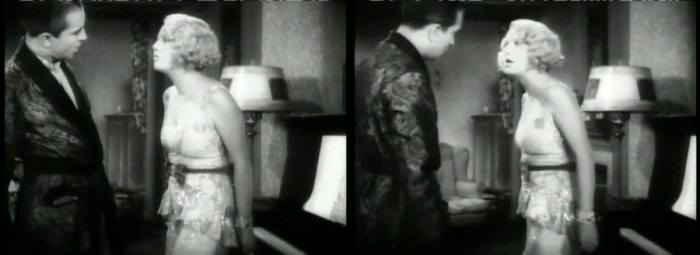

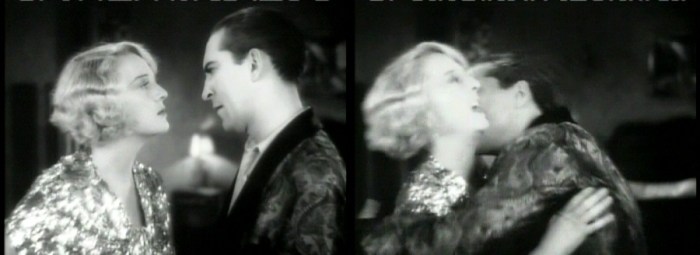







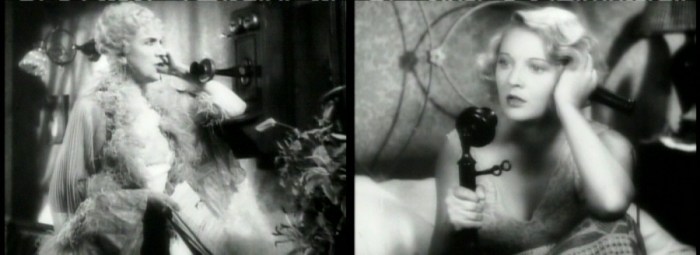
The work of cinematographer Sid Hickox on “Safe in Hell” is often spectacular, in particular the images below from the next sequence in the film as Gilda gets dressed to leave town. Much of this next sequence is a shot of her reflection in the mirror, not groundbreaking by any means, but just so unusual for a an early sound film (which are usually so fixated on sounds and sound effects. The beautifully expressive cinematography not often seen in American films of this period goes a long way toward making this 78 minute film melodrama more interesting and rewarding than most. It is likely that by 1930-31 Hollywood some Hollywood filmmakers had pretty well absorbed the European influences of directors such as Murnau, Lang, Sjostrom, the cinematographers Struss, Freund, Mate, and many more, who had worked in Hollywood from the mid-20s up to the time of this film. And with minimal captions, here are some of those images:


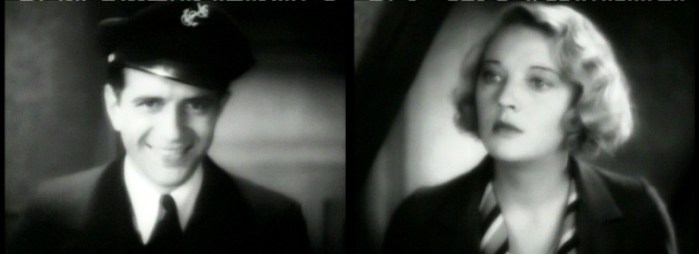


Dorothy Mackaill’s career was on the upswing six years before “Safe in Hell,” in 1925 when she starred in another film about finding and losing love with a sailor. She co-starred with Richard Barthelmess — a popular and critical favorite since at least 1919 when he appeared as “the Chinaman” opposite Lillian Gish in D. W. Griffith’s “Broken Blossoms.” Barthelmess, an actor virtually unknown to modern audiences, was a major star in 1925 and Mackaill was rapidly climbing toward similar heights. The film was “Shore Leave,” and Barthelmess played a sailor who meets and, naturally, falls for a girl on the shore, Connie Martin (Dorothy Mackaill). Connie is so far removed from Gilda of “Safe in Hell” that it is sometimes hard to believe we are watching the same actress. Maybe Mackaill had a rough six years between “Shore” and “Hell,” or maybe she was simply an actress with great range, or a combination of those elements, but it is worth a quick look at images from that earlier film, a pleasant if somewhat unbelievable (Dorothy Mackaill as a neglected spinster) tale.
In many of these shots, Mackaill resembles no one more than the granddaughter of her contemporaries, John Barrymore and Dolores Costello — Drew Barrymore. Or maybe Drew’s skinny older sister.
“Shore Leave” was directed by John S. Robertson who was a prolific director in almost every genre beginning as both actor and director in the mid 1910’s with Vitagraph, the early 20s with Paramount and First National, before signing with MGM in the early months of that organization, until the early 30s when he freelanced with Universal and Columbia, then RKO where he worked until the late 30’s. His career as director resembles that of Clarence Brown, a contemporary and fellow MGM employee. Like Brown, Robertson never fit the mold of “auteur” and he did much of his best work with top female stars of the period: Lillian Gish, Dorothy Gish, Mary Pickford, Greta Garbo, Nita Naldi, Corinne Griffith, Bessie Love, Marguerite Clarke, Agnes Ayres, Billie Burke, and with male stars John Barrymore, Lionel Barrymore, John Gilbert and William Powell. He was by 1925 well acquainted with Barthelmess, with whom he had made already half a dozen films, and with Mackaill who had worked for him two years earlier in 1923, in “Twenty-One,” opposite Barthelmess.
Cinematographer Roy Overbaugh produces some fine work in these atmospheric closeups of Mackaill in “Shore Leave,” whose unruly hair seems to require, as it had in “Hell,” occasional brushing out-of-the-way, which is turned into an attractive signature feature of Mackaill’s characters in both films.
It is tempting to portray the career of Dorothy Mackaill as being a star whose ascent was first stunted by sound, and having survived this transition with a series of interesting, frank, risqué talkie melodramas, was dealt a death-blow by the industry-wide enforcement of a Production Code that banned such films on moral grounds, effectively ending her film acting career. It is tempting to portray her career with the broad brush of “tragedy.” But I don’t see it in the available facts.
The facts are that none of her late silent or early sound films were big moneymakers, and in 1931 at the end of her seven-year contract with First National, she was released. She spent the next six years (a lifetime in Hollywood) freelancing in which she made only eight films (after having made 54 in the prior ten years), each bringing smaller roles and/or smaller productions. After “Safe in Hell,” (her final First National release), she made only two more films outside of poverty row: “No Man of Her Own” with Paramount in which she was support for Clark Gable and Carole Lombard (their only on-screen pairing), and “The Chief,” with MGM. One co-starring role was with Humphrey Bogart, long before he was a star, or even a successful character player in film, at Columbia in 1932, “Love Affair.”
At some point she may simply have lost interest in her waning career and combined with increasing family obligations (usually described as having to care for her mother), it may have been enough to end her film career. Not the great wall of sound, not the censorial Production Code. She had three unsuccessful marriages, barely the minimum for a Hollywood star of any period. I’ve yet to read of any chemically induced dissipation or mental breakdowns, none of the stuff of great tragedy in the world of the arts and entertainment. It may not have been a career ending with a bang or a whimper, but simply the closing of one chapter and the opening of another — just life.

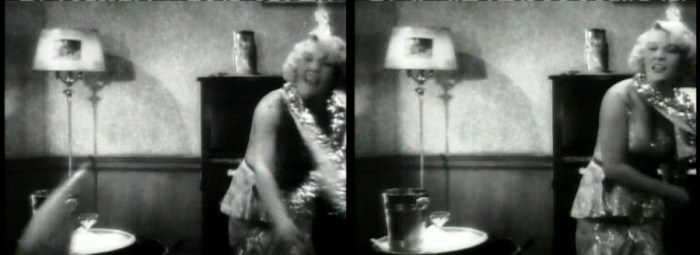
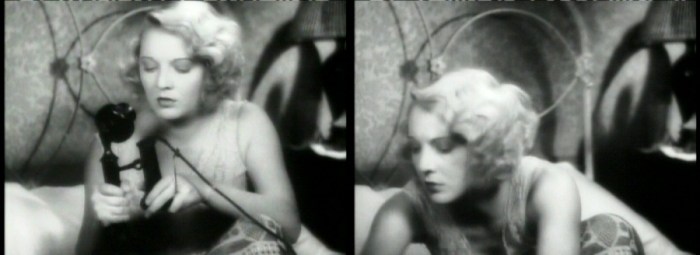


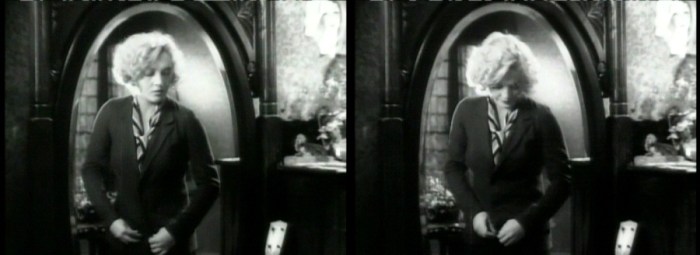













Thank you for a wonderful article.I love reading about actors and actresses that weren’t exactly A listers but were terrific just the same.Especially in the Pre-code era.I hope there are plenty more.
Excellent informative and interesting article many thanks for sharing it. Dorothy’s life story would make quite a movie itself. One with a happy ending too if an actress to play her could be found !!!
You’re welcome, Paul. I agree it would make an interesting film, except that it seems most people prefer tragic stories, e.g. Monroe, Harlow etc., and Dorothy was far less “tragic.”
Gene.
Thank you. I’m glad you liked it. Dorothy Mackaill could be considered an A lister for a brief time in the late 20s when she was making silents. But because those films are rarely available for viewing and some may no longer exist, her reputation rests mainly on her work in sound films mostly “pre-code.” Those were also rarely seen until recent years so her name doesn’t quite register with modern audiences. There’s certainly no shortage of underrated, overlooked or forgotten figures in that (or any) period, and although it wasn’t my original intent, much of this blog has looked at exactly that kind of person — those who deserve to be better known — and will continue to do so. Stay tuned!
Congratulations on your lovely treatment of Dorothy Mackaill. She would have appreciated your insight. I’d been familiar with her name but had never seen her work until I was intrigued by the WB Archives description of SAFE IN HELL. That is indeed a remarkable film, and I’ve since enjoyed both of the Archives’ subsequent Mackaill double-feature sets. I’m impressed by Dorothy’s good looks and sex appeal, of course, but especially by the intelligence and zest (some might call it spunk) that she brought to her roles. She’s immensely appealing, and it’s been gratifying that the Archives releases have apparently brought her a lot of new fans. BTW, she appears in two episodes of HAWAII FIVE-O, “Target, A Cop” (1976; as Mrs. Pelcher) and “School for Assassins (1980; as an “old lady”). She passed away in 1990.
Thank you very much. I hope she’s in a SAFE place far from HELL where she can appreciate the renewed interest in her and her work. It’s only right that WB should bring her a lot of new fans since they dumped her contract in 1931. I’d like to see more of her silent work (a good ten years worth, dozens of films) re-surface, too.
Great stuff. I have an interest as Dorothy was born around the corner from me !, in a terrace house in East Yorkshire city, Hull ! She went the same School as my daughter now attends! ( Thoresby School) . She left Hull I heard at 15, but her Mother ran away ( leaving her to be brought up by her Dad) when she was 11. She apparently revisited her home town only twice after she left , or at least only twice since she became a star. She got a huge public reception once. crowds in the street etc, prob early 30s, then in the 40s she came and visited dance studios, drama groups. I can’t verify all this , but was told it by a elderly lady who siad she met her when she did a visit to her dance school ! Hull seems to have forgotten her to a large extent which is a shame ! I do my best to reinstate her as the star she was !
Glad you enjoyed the article. Dorothy Mackaill’s story, particularly her early years, childhood, pre-American, pre-Hollywood, has not been explored much at all, to my knowledge. I’m not aware of any in-depth biographical research on her life, although the best place to start would be her home town, of course! From what little I know about researching geneology, recordkeeping in England is generally quite extensive geneologically speaking, and I’m sure that there are also newspaper accounts if she returned after becoming a star that would give some insight into her early years.
thank you for this site , the actress came from my home city of Hull, there is a film of her on the pathe news on her return in 1930 the head line was the most kissable girl in hollywood returns, it is a great pity that not many people in Hull have heard of her ,however at the momentshe is been widely talked about on facebook on the old hull page and was also mentioned on the local radio today so who knows many more people will get to know all about her
You’re welcome. There is a resurgence of interest in Dorothy Mackaill in America, several of her sound films have been released on DVD, and Turner Classic Movies in America has also broadcast them. My interest in Mackaill dates to the TCM broadcast of the “Complicated Women” documentary about the female stars of “pre-code” Hollywood. Mackaill memorabilia — original photos, lobby cards and fan magazines are quite collectible and fetch decent prices on ebay — I know, I’ve been outbid on most items! It may take longer for her home country to “rediscover” her, although the Hull facebook page sounds like a good start. Thanks for your comments!
Hello Fans
I had never heard of Dorothy before. I had bought an antique dresser and found an autographed photo of her left within the drawer.
Thank you for the beautiful bio. The stars will always shine.
James O’Brien
Thank you. Glad you enjoyed it!
I have just seen Dorthy Mackail for the first time. In ‘Safe In Hell’. She and the film are both remarkable. I hope to see more of her films and many more pre-code flicks.Compared to tody’s output both the actors and the films are so much better.
Yes, unfortunately, that’s true for the most part. The pre-codes are eye-openers, aren’t they? Thanks for commenting!
First off, let me say that I love how you’ve taken the time to respond to commentators since 2011 🙂 Having said that, I welcome your reply to mine. I have just seen Dorothy Mckaill for the first time (I believe) in “Kept Husbands.” Great little film that reminds me exactly why even though I am only 30 yrs of age, have a love for these type of movies. The era, the love of film period (and have, since my early 20’s.) I stumbled upon your article and have to say I truly enjoyed getting to know her a little better, thank you… It’s amazing to me sometimes how 80 some years later we are still revering at and speaking of such wonderful actors. For someone like her who seems to have been a bit underrated, if she could only see now! 🙂 And if only I could remember which film I THINK I’ve seen her in before! A face like that you don’t forget… 😉
just watched Dorothy in Kept Husbands 1931 with Joel McCrea (one of my favorites). Love old movies & thrilled to “find” new stars like Dorothy.
Yes, it’s always fun to “rediscover” someone or something in the past that was popular or important to its time, but has been unfortunately or unfairly forgotten, or overlooked. That’s been a major theme of what I’ve tried to do with this site. Thanks for commenting!
First off, let me say that I love how you’ve taken the time to respond to commentators since 2011 🙂 Having said that, I welcome your reply to mine. I have just seen Dorothy Mckaill for the first time (I believe) in “Kept Husbands.” Great little film that reminds me exactly why even though I am only 30 yrs of age, have a love for these type of movies. The era, the love of film period (and have, since my early 20′s.) I stumbled upon your article and have to say I truly enjoyed getting to know her a little better, thank you… It’s amazing to me sometimes how 80 some years later we are still revering at and speaking of such wonderful actors. For someone like her who seems to have been a bit underrated, if she could only see now! 🙂 And if only I could remember which film I THINK I’ve seen her in before! A face like that you don’t forget… 😉
I think if someone is interested enough and takes the time to leave a comment, then it deserves acknowledgment and a response. Thanks for yours. You may have seen Dorothy Mackaill in “Safe in Hell,” which TCM shows on occasion — it’s probably her best known film to modern audiences. Also, the documentary “Complicated Women,” which TCM broadcast yesterday, highlights her work in that film — in fact, that’s where I first saw her and became interested in her films. Unfortunately, I haven’t seen more than a handful of them myself. Mackaill became a star in silent films in the 20s — most of those are not available for viewing (or worse, have been lost to decomposition). She left movies in the late 1930s after her career slowed to a crawl, so unlike her contemporaries whose careers lasted into the 40s and 50s or beyond, she wound up being “forgotten.” Also, some pre-code films, such as Safe in Hell from 1931, were not rereleased after the Production Code began to be strictly enforced in 1934, and were considered “unacceptable,” and also were not shown when television arrived in the late 40s, early 50s. Thankfully, we have a renewed interest in those films, largely aided by TCM, and these early sound films and their stars have gotten new life and respect. Thanks again for your comments, they are much appreciated!
Hello Gene,
Thanks for your response and interesting comments.I am a film fan from the last great ‘picture going period’. The 1950’s while it is only in recent years I have stopped going to the cinema. I did’nt change. They did. Pre code are a new discovery. Thanks to the internet and dvds. With Dorothy Macskaill completey unknown until viewing ‘Safe In Hell’ for the first time.What a loss to film as Dorothy really could have repaced Jean Harlow. After her tragic early demise.I will look for other of her films.
Sadly TCM in the UK is a very poor version of yours in America. I will not renew my subscription.
As they show way too few b&w flix. Featuring mainly 50s westerns (colour) and Bruce Willis films.
Best wishes,
Paul Barrett
I agree with your comments — the movies have changed, and mostly not for the better. I don’t understand why TCM UK doesn’t offer similar content — the demand for “classic” film seems to be there. Fortunately, there is a lot available on home video at reasonable prices. Thanks for your response. Keep reading!
Thanks so much for yours! Again you give me a little more insight 🙂 I’m glad I found this website and will be coming back to it often. And yes it truly is a shame she had such a short career… I will have to see Safe In Hell and figure out if that’s the one, if not, I’ll have fun going through the rest 😉 Gotta love TCM. Thanks again
You’re certainly welcome. Keep me updated on what you see, as well. Thanks!
I read (from the “LA Times” …
he made a few early sound pictures (“Love Affair” in 1932 with Humphrey Bogart and “The Chief” in 1933 with Ed Wynn), but had fallen in love with Hawaii on a visit for a film in 1929 and moved there permanently in 1934 after marrying her third husband, an orchid grower.
In the mid-1970s–to honor her devotion to Hawaii–Honolulu declared “Dorothy’s Day” and serenaded and praised her at her hotel.
Funeral arrangements were pending, but friend Harry Robello said he would scatter her ashes off Waikiki Beach, where Miss Mackaill had sunbathed nearly every day until her health failed
Harlan,
Thanks for the “clipping” from the LA Times. Interesting information.
Gene.
I simply love Dorothy Mackaill, especially as she was a local girl to me – Hull’s about 10 miles away. One of those rare blond creatures in Hollywood – untainted by scandal! Seems she was even better looking in real life.
Does anyone know what brand of car she drives in Love Affair?
Thomas,
No, i don’t. But I’m sure that if you took a screen capture of the car from the film and posted it on antique auto enthusiast websites you would find your answer.
Gene.
Thanks, Gene, great idea. By the way, love your site, particularly your research and write-ups on Florence la Badie. Contrary to her contemporaries, she had an ethereal, almost tragic look. Do you have anything more about her coming soon? Thanks again.
Thomas,
You are quite welcome. I’ve been sitting on a “Part 3” for Florence La Badie for quite a while, in large part because — oddly enough — documentation for her life and career in the form of available primary source material, including her films, is actually a lot thinner for the last couple of years (1916-17) than for the early or middle periods. I am excluding, of course, the circumstances of her death (real and imagined) as well as the Woodrow Wilson mumbo-jumbo, both of which have already been beaten to a pulp in other forums. (I do have a lot of unique material for her early life that I’ve received subsequent to Parts 1 & 2 that I won’t use without permission from her descendants.) The essays on this site are my opinions based solidly upon facts. The fewer facts, then the more one tends to rely on speculation and not fact-based opinion. I feel that part of my job is to bring life again to the ghosts, but that can be a very slippery task, especially when what remains is next to ephemeral. But to answer your question, I will say, “sooner rather than later.” 😉
Hi greeat reading your blog
Thank you, I’m glad you enjoy it.